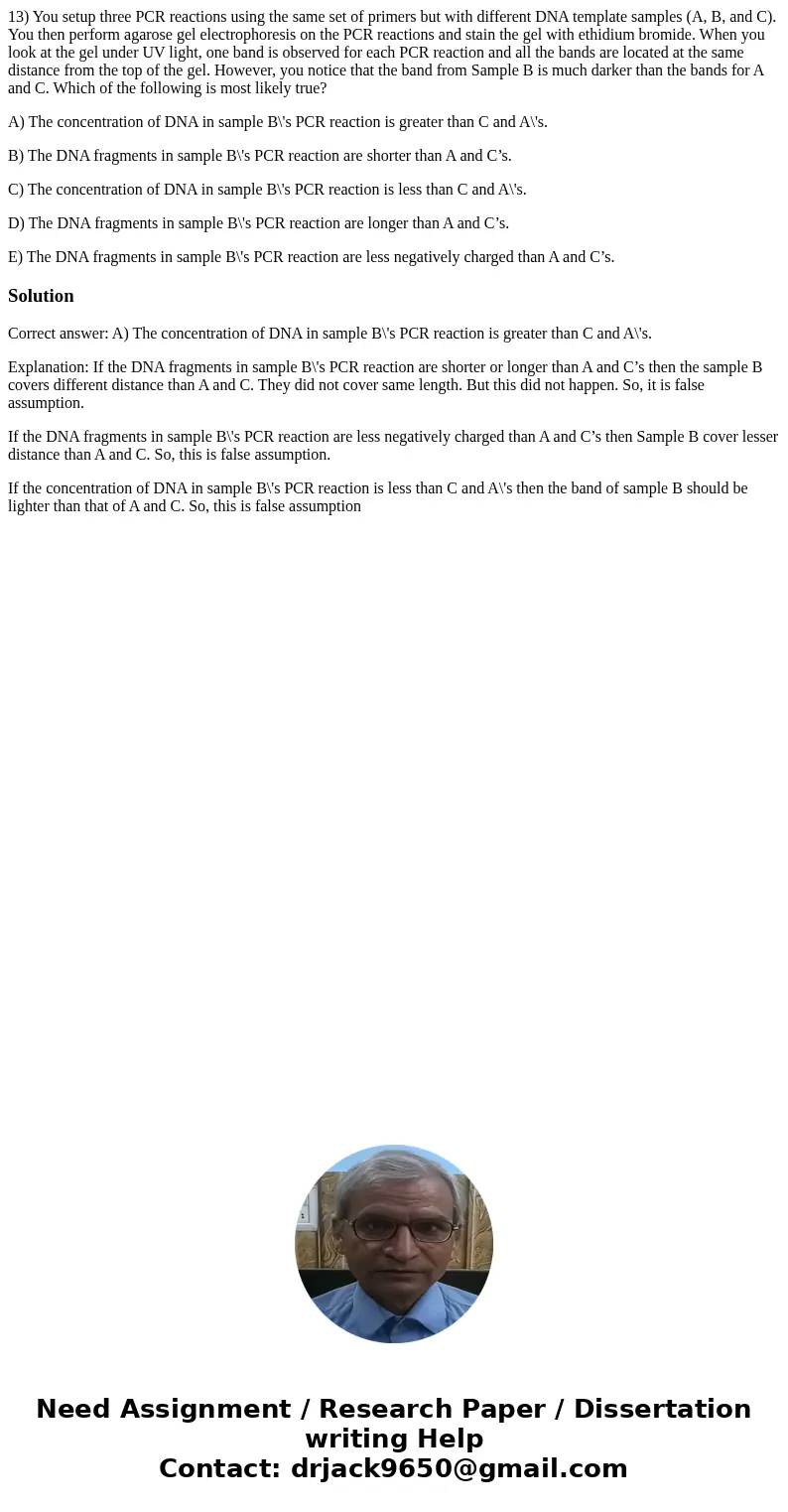13 You setup three PCR reactions using the same set of prime
13) You setup three PCR reactions using the same set of primers but with different DNA template samples (A, B, and C). You then perform agarose gel electrophoresis on the PCR reactions and stain the gel with ethidium bromide. When you look at the gel under UV light, one band is observed for each PCR reaction and all the bands are located at the same distance from the top of the gel. However, you notice that the band from Sample B is much darker than the bands for A and C. Which of the following is most likely true?
A) The concentration of DNA in sample B\'s PCR reaction is greater than C and A\'s.
B) The DNA fragments in sample B\'s PCR reaction are shorter than A and C’s.
C) The concentration of DNA in sample B\'s PCR reaction is less than C and A\'s.
D) The DNA fragments in sample B\'s PCR reaction are longer than A and C’s.
E) The DNA fragments in sample B\'s PCR reaction are less negatively charged than A and C’s.
Solution
Correct answer: A) The concentration of DNA in sample B\'s PCR reaction is greater than C and A\'s.
Explanation: If the DNA fragments in sample B\'s PCR reaction are shorter or longer than A and C’s then the sample B covers different distance than A and C. They did not cover same length. But this did not happen. So, it is false assumption.
If the DNA fragments in sample B\'s PCR reaction are less negatively charged than A and C’s then Sample B cover lesser distance than A and C. So, this is false assumption.
If the concentration of DNA in sample B\'s PCR reaction is less than C and A\'s then the band of sample B should be lighter than that of A and C. So, this is false assumption

 Homework Sourse
Homework Sourse